Post Two - Southern California
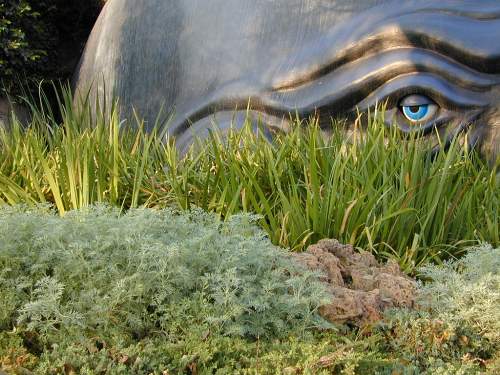 Disneyland DisneylandAfter we left Karen's sister's house in Riverside, we wanted to get out of the L.A. area and continue down the coast. Karen had been to Disneyland when she was a child and wanted to see it again. We visited in the early afternoon of a Wednesday. It was not very crowded and we rarely had to wait for rides. We had a good time but both Karen and I thought it would be larger. Also, some of the attractions seemed a little faded with age. I guess the perceptions and expectations you have as a child never seem to match up with reality when you are older. But is that because our memories are incorrect or have we changed too much to appreciate our childhood point of view? |
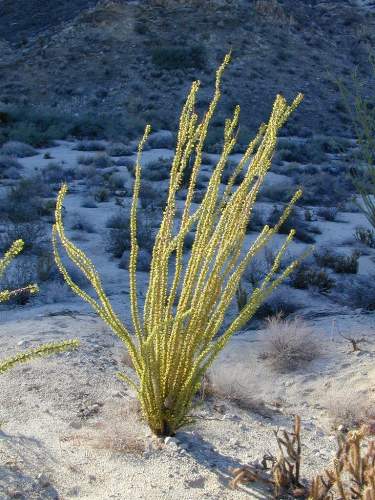 Ocotillo in Bloom Ocotillo in BloomAfter Disney we meandered down the coast until we got to San Diego. By this time we were tired of all the people, cars, and urbanization of Southern California. We wanted desert and wide-open spaces so after one night in the San Diego area we headed inland to the Anza-Borrego Desert State Park. Located about 10 miles north of the Mexico border, this area had all the solitude we wanted. In fact, we were the only people in the campground - probably because of the intense heat. It was too hot to hike during the day, so we spent the days resting under our awning, reading, and waiting for the sun to go down. It must have rained right before we arrived because the whole desert was in bloom. This is a photo of an Ocotillo. Usually they look like sticks waving in the breeze but after a rain they sprout thousands of delicate green leaves and long red flowers. It's quite a site to behold in the middle of a barren desert and I spent an entire afternoon photographing them as the sun went down. |
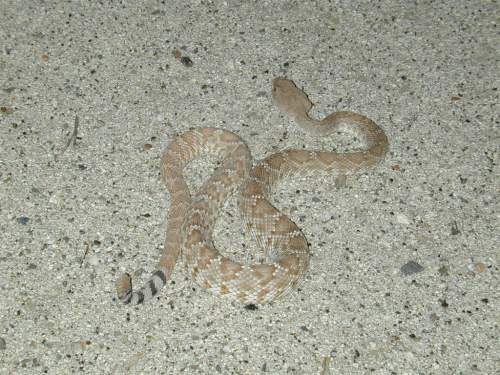 Mohave Rattlesnake Mohave RattlesnakeWe weren't the only creatures trying to escape the sun. I almost stepped on this guy walking from the van to our picnic table. My guidebook says it's a Mohave Rattlesnake (you can tell by the bands on the tail). Supposedly their venom is a particularly strong neurotoxin. We took a few photos and let him (her?) continue on his way. Karen wanted to play with it a la the Crocodile Hunter but I wouldn't let her. She's kind of crazy that way sometimes and I have to keep her under control. |
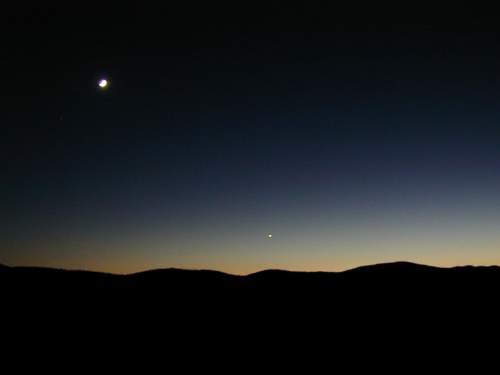 Nighttime in the Desert Nighttime in the DesertBecause it was so warm at night, we would sit out for hours talking and looking at the stars. We came to know the phases of the moon fairly well - something that one can rarely see in cloudy Seattle. I bought a star chart (astronomical not astrological) and started memorizing the constellations. Someday I would love to buy a telescope and get to know the heavens more intimately. There is nothing that puts things in perspective like realizing how vast the universe is. Does it really matter who got the most votes for president when we are really just specks of dust in an infinite universe? Probably not. Unless you are one of the candidates, I guess. In this photo you can see the moon and Venus right after the sun set. |
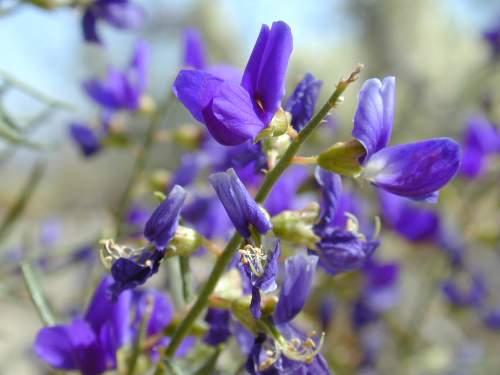 Desert Flower Desert FlowerFrom Anza-Borrego we went north, past the Salton Sea (where it was REALLY hot), and up into Joshua Tree National Monument. The desert was blooming here too and we were amazed at the color and variety of flowers. The desert sun sucks water from the plants and animals that live there and so they have all kinds of adaptations to retain moisture. However, when the plants get enough rain, they throw caution to the wind and explode in an array of reproductive splendor that requires huge amounts of precious water. It's sort of like blowing your paycheck on an expensive suit just to impress a date. Here is a photo of a desert plant looking for love. |
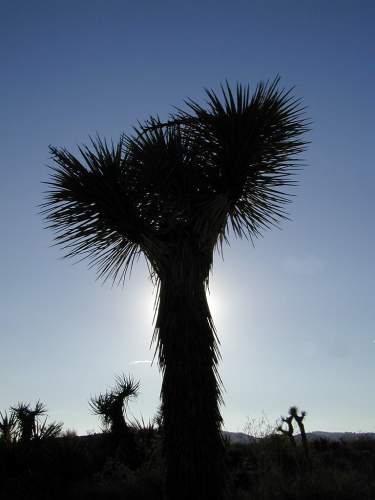 Joshua Tree Joshua TreeThe desert landscape is unreal. The expanses are wide and consist of mostly barren rock. But the plants and animals that do live here are amazingly well adapted for the harsh environment. It seems that everything is covered with thorns or spurs and nothing moves during the heat of the day. Most animals are active by night and the plants have complex mechanisms for transpiring without loosing too much water. It is an environment unlike any other and is one of my favorite places to be. The emptiness allows you to turn inward and examine things you don't often have time to pay attention to. For example, the Joshua tree in this photo is a type of Yucca and is pollinated almost exclusively by the Yucca Moth. How did that come to be? Darwin or Divine? Perfect questions for arid contemplation. |
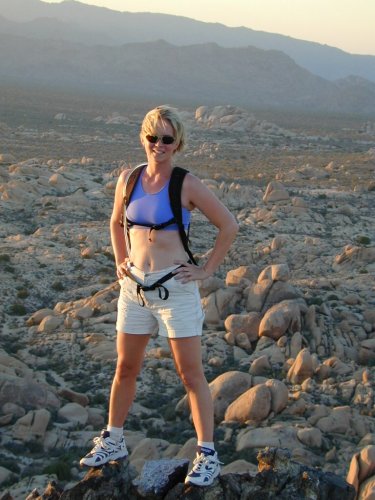 Karen at Joshua Tree Karen at Joshua TreeWe spent almost a week in Joshua Tree. I spent my days scrambling around on the rocks, relearning my climbing techniques, and getting into stretching and basic yoga. I also read, took photos, and simply enjoyed life. We would wake with the sun and go to bed when it set. This was the first place that I felt we had really left our working lives behind. We were enjoying each moment, without obsessing over past or future moments. I feel this photo shows how Karen and I felt in this magical place. |
Next Up: Las Vegas
Copyright 2000
Scott & Karen Semyan